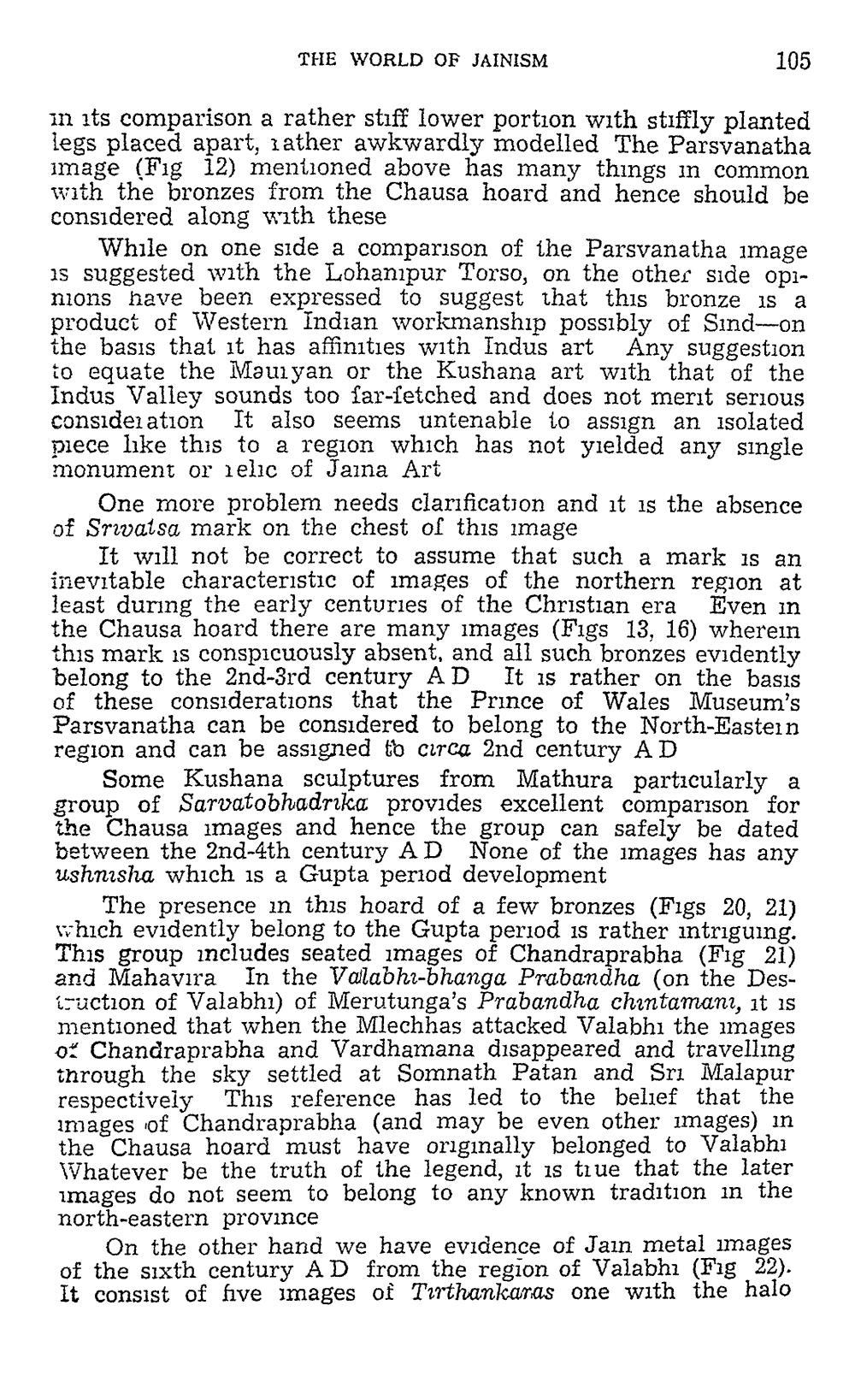________________
THE WORLD OF JAINISM
105
in its comparison a rather stiff lower portion with stiffly planted legs placed apart, rather awkwardly modelled The Parsvanatha image (Fig 12) mentioned above has many things in common with the bronzes from the Chausa hoard and hence should be considered along with these
While on one side a comparison of the Parsvanatha image is suggested with the Lohanipur Torso, on the other side opinions have been expressed to suggest that this bronze is a product of Western Indian workmanship possibly of Sind-on the basis that it has affinities with Indus art Any suggestion to equate the Mauiyan or the Kushana art with that of the Indus Valley sounds too far-fetched and does not merit serious consideration It also seems untenable to assign an isolated piece like this to a region which has not yielded any single monument or relic of Jaina Art
One more problem needs clarification and it is the absence of Srivatsa mark on the chest of this image
It will not be correct to assume that such a mark is an
table characteristic of images of the northern region at least during the early centuries of the Christian era Even in the Chausa hoard there are many images (Figs 13, 16) wherein this mark is conspicuously absent, and all such bronzes evidently belong to the 2nd-3rd century AD It is rather on
is rather on the basis of these considerations that the Prince of Wales Museum's Parsvanatha can be considered to belong to the North-Eastein region and can be assigned to circa 2nd century AD
Some Kushana sculptures from Mathura particularly a group of Sarvatobhadrika provides excellent comparison for the Chausa images and hence the group can safely be dated between the 2nd-4th century AD None of the images has any ushnisha which is a Gupta period development
The presence in this hoard of a few bronzes (Figs 20, 21) which evidently belong to the Gupta period is rather intriguing. This group includes seated images of Chandraprabha (Fig 21)
ra In the Valabhz-bhanga Prabandha (on the Destuction of Valabhı) of Merutunga's Prabandha chintamani, it is mentioned that when the Mlechhas attacked Valabhi the images Om Chandraprabha and Vardhamana disappeared and travelling through the sky settled at Somnath Patan and Sri Malapur respectively This reference has led to the belief that the images of Chandraprabha (and may be even other images) in the Chausa hoard must have originally belonged to Valabhi Whatever be the truth of the legend, it is true that the later images do not seem to belong to any known tradition in the north-eastern province
On the other hand we have evidence of Jain metal images of the sixth century AD from the region of Valabhi (Fig 22). It consist of five images of Tirthankaras one with the halo




